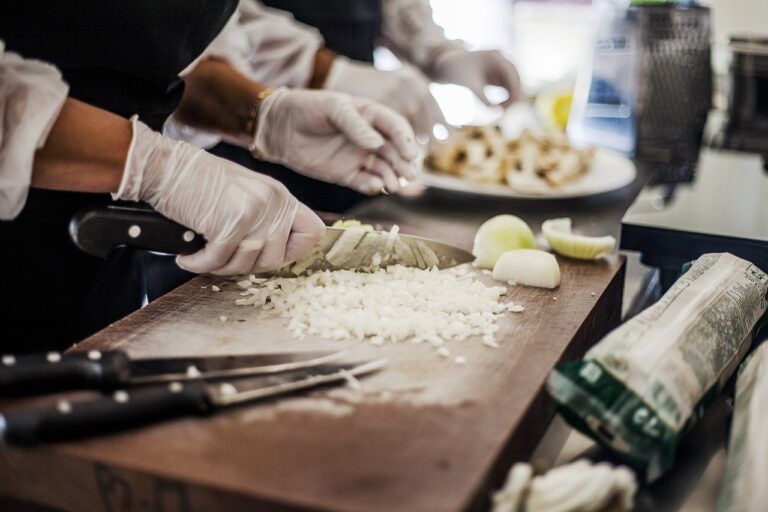Exploring Food Industry Partnerships with Indigenous Cultural Heritage Organizations
Indigenous cultural heritage plays a vital role in shaping the food industry by offering unique and traditional ingredients, cooking methods, and recipes that have been passed down through generations. The use of indigenous cultural heritage in the food industry serves as a way to preserve and showcase the rich culinary traditions of various indigenous communities, highlighting their deep connection to the land and respect for nature.
Furthermore, by incorporating indigenous cultural heritage into the food industry, we are not only celebrating diversity but also creating opportunities for mutual learning and understanding between different cultures. It allows for a greater appreciation of the historical and cultural significance of indigenous cuisines, fostering a sense of pride and identity within indigenous communities while also promoting cultural exchange and appreciation among a wider audience.
Collaborative Initiatives between Food Industry and Indigenous Cultural Heritage Organizations
Numerous collaborative initiatives have been established between the food industry and indigenous cultural heritage organizations in recent years. These partnerships aim to celebrate and preserve traditional knowledge, culinary practices, and ingredients that are integral to indigenous cultures. By working together, these entities are able to promote cultural diversity, support local communities, and create a platform for sharing the rich history and significance of indigenous food traditions.
One example of a successful collaboration is the development of food products that incorporate traditional indigenous ingredients. These initiatives not only help to preserve cultural heritage but also provide new opportunities for indigenous communities to showcase their culinary traditions on a larger scale. By blending traditional ingredients with modern culinary techniques, these collaborations create unique and innovative food products that appeal to a wider audience while promoting the significance of indigenous cultural heritage.
Incorporating Traditional Indigenous Ingredients in Modern Food Products
Across the food industry, there is a growing trend towards incorporating traditional Indigenous ingredients into modern food products. This movement is not only a means of diversifying flavor profiles but also a way of honoring and preserving Indigenous cultural heritage. The use of ingredients such as bison, wild rice, saskatoon berries, and cedar in contemporary dishes not only adds unique tastes but also highlights the deep connection between food and cultural identity.
By embracing traditional Indigenous ingredients, food companies are not only tapping into new flavors but also supporting Indigenous communities and their sustainable practices. The incorporation of these ingredients in modern food products provides an opportunity for consumers to learn about and appreciate Indigenous foodways while also contributing to the economic empowerment of Indigenous peoples. Ultimately, this incorporation serves as a way of bridging the gap between the past and the present, creating a more inclusive and diverse culinary landscape.
• Bison, known for its lean and flavorful meat, is being used in dishes like burgers and steaks
• Wild rice, a staple in many Indigenous diets, adds a nutty flavor and chewy texture to salads and soups
• Saskatoon berries, similar to blueberries but with a unique taste, are being incorporated into jams, pies, and desserts
• Cedar, often used for smoking meats or infusing flavors into cocktails, brings a fragrant and earthy element to dishes
Incorporating traditional Indigenous ingredients not only benefits the food industry by offering new and exciting flavors but also plays a crucial role in preserving cultural heritage. By working closely with Indigenous communities to source these ingredients sustainably, food companies can ensure that these practices continue for generations to come. Additionally, this collaboration fosters mutual respect and understanding between different cultures.
Furthermore, the use of traditional Indigenous ingredients opens up opportunities for chefs and home cooks alike to experiment with new recipes and cooking techniques. This exploration of diverse ingredients encourages creativity in the kitchen while also promoting awareness of the rich culinary traditions of Indigenous peoples. As more consumers seek out authentic experiences through food, incorporating these ingredients becomes not just a trend but a way of celebrating diversity and honoring history.
Why is it important to incorporate traditional indigenous ingredients in modern food products?
Incorporating traditional indigenous ingredients not only preserves cultural heritage but also promotes sustainable food practices and introduces unique flavors and nutritional benefits to the modern food industry.
How can the food industry collaborate with indigenous cultural heritage organizations?
The food industry can collaborate with indigenous cultural heritage organizations by engaging in partnerships, consulting with indigenous communities, and supporting initiatives that promote the use of traditional ingredients.
What are some examples of traditional indigenous ingredients that can be incorporated into modern food products?
Some examples of traditional indigenous ingredients include wild rice, bison, seaweed, chia seeds, and mesquite flour. These ingredients can add depth of flavor and nutritional value to modern food products.
How can consumers support the incorporation of traditional indigenous ingredients in modern food products?
Consumers can support the incorporation of traditional indigenous ingredients by seeking out products that feature these ingredients, learning about the cultural significance of these ingredients, and advocating for greater representation of indigenous foods in the market.







